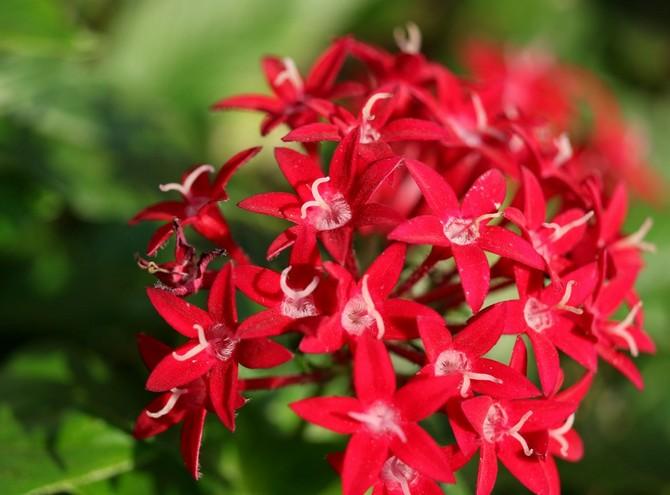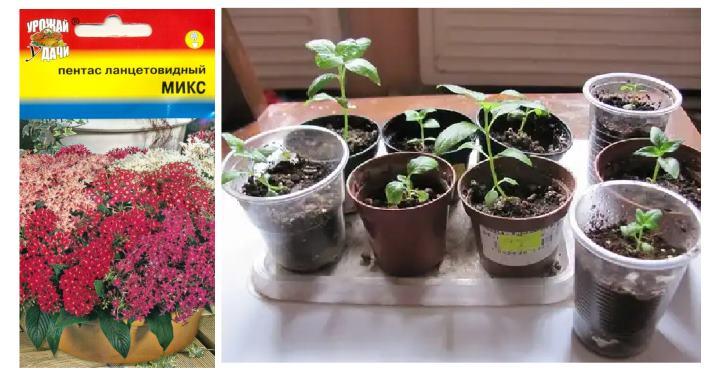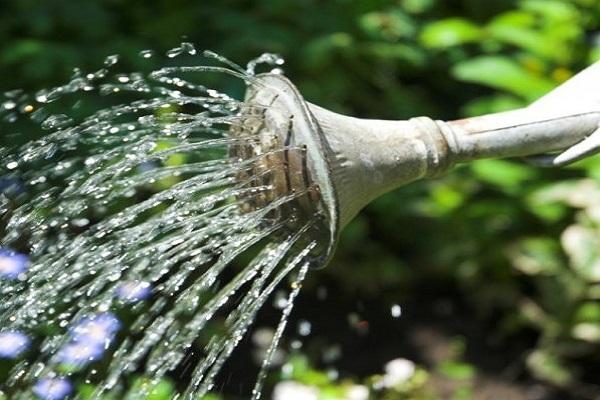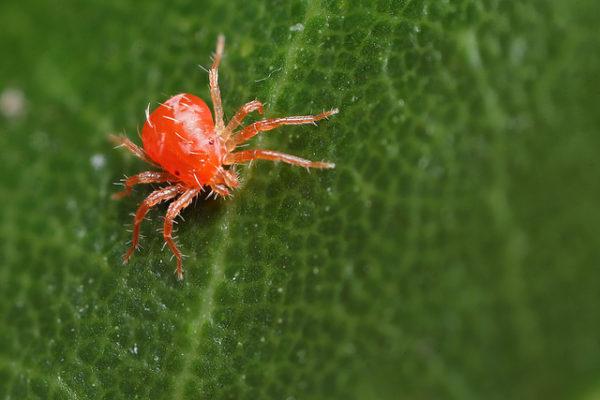Growing the Egyptian star, as the pentas flower is also called, is not difficult. The only point worth paying attention to is that in mid-latitudes it is cultivated only as an annual plant in open ground. But at home, on the windowsill, the exotic guest delights with bright colors during the cloudy season - from October to February. The homeland of this plant, like the entire Rubiaceae genus, is the tropics of Africa and the island of Madagascar.
- General description and characteristics of a perennial crop
- Pentas varieties
- Pros and cons of a flower
- Subtleties of growing ornamental crops
- Lighting and placement
- Preparation of planting material
- Planting material
- Planting scheme
- Nuances of flower care
- Watering
- Fertilizer
- Trimming
- Transfer
- Diseases, pests and ways to combat them
- Reproduction methods
- Application in garden design
General description and characteristics of a perennial crop
In open ground, the annual plant reaches 0.5 meters. It is characterized by weakly branched, erect shoots and leaves of green color and broadly lanceolate shape. The length of the leaf blades of pentas does not exceed 8 cm. Tubular flowers on an exotic plant appear in the spring, this process continues until autumn. The buds have different colors, this parameter depends on the variety.
Pentas varieties
Lanceolate pentas has several varieties:
- New bow F1. The hybrid is characterized by abundant flowering and a height not exceeding 25 cm. The flowers have a pink, white, and red tint.
- Starla white. It reaches a maximum height of up to 45 cm. It blooms with snow-white five-pointed stars.
- Starla Lavender Shades. A powerful plant reaching a height of 50 cm. The shade of the inflorescences is delicate lilac.
- Starla mix. The variety blooms continuously for six months with purple, pink and white stars.
Pros and cons of a flower
Before planting, study the pros and cons of an exotic crop.
The benefits for gardeners include:
- Attractive decorative appearance of the plant.
- A variety of shades of flowers.
- Long flowering period.
The disadvantages include:
- Impossible to grow as a perennial plant in our climate.
- Requirements for soil composition and lighting.
- The need for pruning to preserve decorative qualities.
Subtleties of growing ornamental crops
As a rule, the process of growing an Egyptian star begins with sowing seeds for seedlings.
Lighting and placement
Sunlight is a must for growing pentas. However, it is better to choose a place where there will be light shade in the strong midday sun. A light breeze or small drafts are not a problem for the Egyptian star.
Preparation of planting material
Pentas seeds are purchased at a specialized gardening store. This material does not require special preparation; some gardeners soak it for several minutes in a weak solution of potassium permanganate. Start sowing in January.
Planting material
Place fertile soil in a plastic container and lightly moisten it with water from a spray bottle. Seeds are scattered over its surface; there is no need to cover it with soil. Cover the top of the container with glass or plastic wrap and put it in a warm place. Do not forget to regularly moisten the soil. After 3 weeks, shoots appear, then the seedlings are planted in separate containers.
Planting scheme
5-6 weeks after the picking, the young seedlings are transferred outside. However, you need to wait until the weather is consistently warm. Pentas does not have any special requirements for the composition of the soil; the only condition is fertility.
Nuances of flower care
In order for the Egyptian star to delight with long and abundant flowering, minimal flower care is organized.
Watering
To irrigate pentas seedlings, only pre-settled water is used. The soil is moistened regularly, but try not to flood the flowers. A sign that the plant needs watering is a dried out top layer of soil. If you constantly overdo it with irrigation, this will lead to rotting of the root system and subsequent death of the flower.
Fertilizer
The gardener will be able to observe long-term flowering only if he uses fertilizing during the growing season. The fertilization procedure is carried out every 10-14 days. Purchase complex preparations for flowering crops.
Trimming
The decorative qualities of the Egyptian star depend on timely pruning. To preserve the beauty of the plant throughout the season, pentas is not allowed to grow higher than 45 centimeters. And in order to make the bushes more lush, young shoots at the top of the Egyptian star are periodically pinched.
Transfer
If the Egyptian star is grown in a flowerbed in open ground, then replanting is not necessary. Every year the seeds are re-sown for seedlings and planted on the plot. In the case when pentas is an indoor plant placed in a pot, replanting is done annually, changing the container to a larger one.
At an older age, the Egyptian star can be replanted once every 2 years, and it is recommended to slightly trim the roots.
Diseases, pests and ways to combat them
A tropical flower is rarely exposed to pests and diseases. Especially if the plant is properly cared for. In rare cases, a gardener faces the following problems:
- Chlorosis. This disease occurs due to a lack of iron in the soil. The leaves of the Egyptian star first turn yellow and then die completely. To save the plant, fertilize with iron chelate is introduced.
- Aphid. Small insects secrete a sticky sap that covers the leaf blades of the plant. When there is a small amount of the pest, folk recipes are used - infusion of marigolds or garlic. In case of severe infection, the use of insectoacaricides cannot be avoided.“Aktellik” and “Aktara” are considered the most effective in pest control.
- Spider mite. The sticky web that envelops the Egyptian star is the first sign of the appearance of a pest. Small dots are visible on the inside of the leaf - this is the pest. When there is a small concentration of insects, use a solution of green soap, which is used to wipe the leaves of the plant. In case of mass damage, purchase acaricidal agents and apply them according to the instructions on the package.
Reproduction methods
Since in our latitudes the tropical flower is grown only as an annual plant, it is propagated annually using seeds, sowing them in January for seedlings.
Application in garden design
Thanks to the variety of colors and long flowering period, pentas is an ideal option for decorating a garden landscape. The Egyptian star is used to decorate borders and flower beds; it is planted in the foreground, and tall evergreen shrubs (thuja, juniper) are placed in the background. The main thing when planting pentas on a site is to take into account the combination of shades so that the flower beds do not look too pretentious.


















